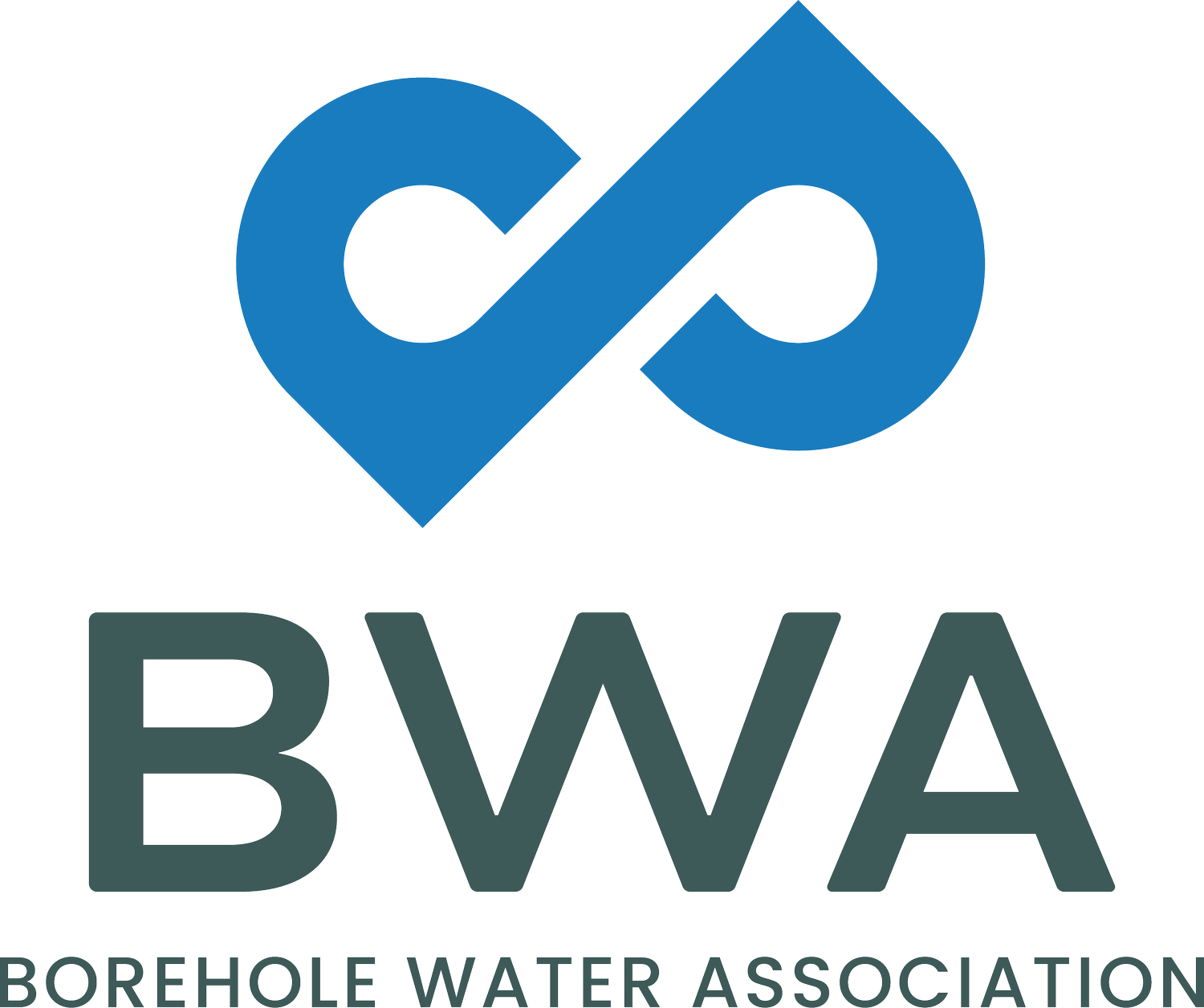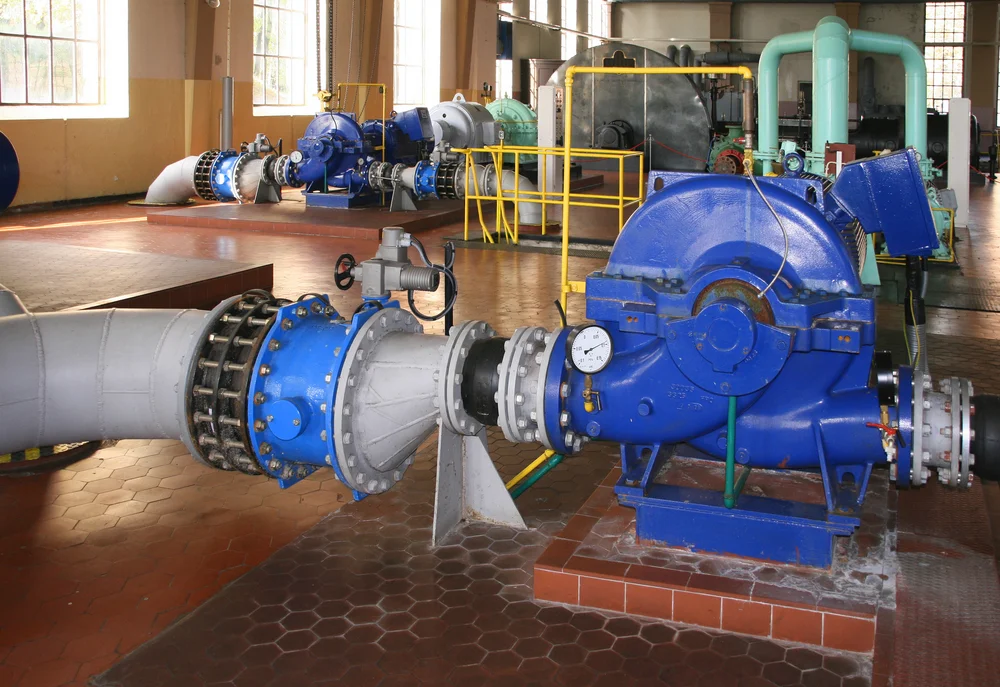Borehole Pump Installation Practice Part 1: Non-Return Valves
/By John Tonkin
In Part 1 of this series of articles aimed at ensuring a long and cost-effective borehole pump installation, we look at Non-Return Valves (NRVs).
What is an acceptable service life for a borehole pump? Anything less than 10 years is a clear indication of a faulty installation. 15 years is, at best, acceptable. 20 years is good and anything after this can be classified as very good. When working for a submersible motor manufacturing company, we regularly saw motors that had been working for 40 years +!
The way to achieve these figures is no secret. Cover the basics and the rest almost always falls into place. One of these basics is ensuring that the non-return valve fitted to the discharge of the pump is effective and of good quality so that it will continue operating for the full life of the pump.
Why fit an NRV?
Wafer-type double-door NRV
This photo above shows a wafer-type double-door NRV (black) fitted to a bronze 200mm 7-stage 150kW submersible turbine that was installed in a coal mine. The system static head was 110m, which meant the valve had to maintain a good seal against a pressure of 11,2 bar each time the pump stopped. This excluded any pressure transients (hammer) that could have occurred due to any sudden changes in fluid velocity. As can be seen, the valve is an after-market addition to the unit. Some pumps are fitted with built-in NRVs but these are often fairly basic units and consideration should be given to fitting a more robust unit if the static head is high.
If no NRV is installed, the entire rising main will drain and the pump and motor will run in a backspin condition each time the pump is switched off. Backspin in pumps MUST be avoided at all costs.
The advantage of installing a good NRV is that the pump will be protected from unacceptable operating conditions and the occurrence of water hammer in the system will be prevented.
The drawback however, is that if the pump needs to be removed, the weight of the water in the rising main adds substantially to the weight of the string. A 75kW installation in the shaft of a South African copper mine weighed 8 tonnes. Fortunately, the mine head gear was adequately equipped to handle the load.
Holes drilled in the NRV's disc
Potential solution to lighten the load?
A potential solution to lighten the load on the rising main is to get the water to run out of the rising main by drilling a hole(s) in the NRV’s disc. While this may lighten the load, other problems are caused such as:
- Upthrust in the pump and motor due to low Total Dynamic Head on start-up.
- Potential for hammer occurring, every time the pump restarts.
- High (draining) flow through the pump could cause backspin.
- The energy added to the system is lost each time the riser drains. The same amount of energy has to be added to refill the pipes.
Immediately after the first elbow, a 50mm brass NRV has been “teed” into the delivery line
PREVENT HAMMER AND REDUCE UPTHRUST?
This photo shows an attempt to prevent hammer and reduce upthrust during the start-up cycle. Immediately after the first elbow, a 50mm brass NRV has been “teed” into the delivery line. This valve opens after shut-down and allows air into the riser in order to break the vacuum created when the water level falls in the pipe. When the pump starts, the (50mm) NRV closes and the air in the pipe is compressed creating a back pressure against the pump. This slows the flow rate down, drastically reducing the possibility of hammer occurring and shorting the duration of any upthrusting in the pump and motor. The downside is the air trapped in the lines is now injected into the surface pipework. Air release valves must be fitted to remove this air from the system in order to prevent a new set of problems arising.
A classic case of the solution to one problem causing one or more additional problems!
A break off bolt is fitted to a closer piece installed immediately after the NRV
AN ALTERNATIVE SOLUTION
One riser pipe manufacturer offers a potential solution to all the negatives detailed earlier in this article.
A break off bolt is fitted to a closer piece installed immediately after the NRV. If the riser requires draining in preparation for the removal of the pump, the elbow at the surface is removed and a steel pipe, attached to suitable cable, is lowered inside the riser. Once the steel pipe is resting on the break plug, the cable is retracted an appropriate distance (dependent on the weight of the steel pipe) and released. The break bolt fractures, opening a hole between the inside of the rising main and the borehole. For larger diameter rising mains, more than one bolt assembly can be fitted.
COSTLY FAILURES
The following three photos show examples of costly failures that had root causes directly related to NRV issues.
Blown motor stator due to start-up under backspin conditions
The stator of this motor had a hole approximately 60mm “blown” in the liner due to start-up under backspin conditions. The start-up current was many more times than the usual 5 times running value.
Remnants of a shattered thrust bearing
Pressure transients (hammer) can travel through steel pipes at up to 1000m/s. Peak pressures of up to three times the normal operating pressures can also be attained. The remnants of this shattered thrust bearing are testament to the destructive forces that are unleashed when the upward rushing column of water fills the (unbroken) vacuum in the riser and finally meets a tightly closed valve on the surface.
Sheared 300kW pump shaft + shattered thrust bearing: start-up under backspin and/or column vacuum conditions
A pump spinning in a reverse direction due to a faulty NRV can achieve rotational speeds up to 5000 rpm. Any attempt to start the pump in this condition will lead to the creation of extreme current and torque values. This sheared 300kW pump shaft (thrust bearing was also shattered) resulted from starting under backspin and/or riser pipe vacuum conditions.
Conclusion
The NRV fitted to the discharge of a groundwater pump is arguably the most important component in the installation. Quality and functionality assume very high degrees of importance.
Installers, what has been your experience with NRVs? Please leave your questions or other input in the comments.











